Motivation
Why Peer Recognition Thrives in the Age of AI

The Rise of AI in the Workplace
In an era dominated by artificial intelligence, where algorithms drive decisions, and robots perform tasks with uncanny precision, it’s easy to wonder about the role of humanity in the workplace. As AI increasingly integrates into our professional lives, we find ourselves at a crossroads, faced with both the opportunities and challenges this technological revolution presents. Yet, amidst the whirlwind of automation and digital transformation, there is one aspect of work that refuses to be overshadowed by the silicon brilliance of machines, and that is the human touch. In fact, it’s thriving more than ever, especially when it comes to recognizing and appreciating the contributions of our peers.
Peer recognition, a cornerstone of workplace dynamics, has emerged as a powerful force that not only survives but thrives in the age of AI. It’s a testament to our innate need for connection, appreciation, and the emotional bonds that make us quintessentially human. In this blog, we embark on a journey to understand why peer recognition remains indispensable in our evolving work landscape. We’ll delve into the vital role it plays in boosting employee morale, fostering engagement, and cultivating a vibrant workplace culture. Moreover, we’ll examine how AI, far from detracting from this vital aspect of our work lives, can enhance and complement peer recognition, offering exciting possibilities for the future.
The Impact of AI on Peer Recognition
Artificial Intelligence, with its data-crunching prowess and algorithmic precision, has certainly left its mark on the modern workplace. It’s revolutionized how we work, streamlining processes and enabling us to accomplish tasks once thought impossible. However, the rise of AI has also given rise to concerns about its potential to diminish the role of humans in various professional spheres. When we talk about peer recognition, it’s important to acknowledge the impact of AI, which can be both a disruptor and an enabler.
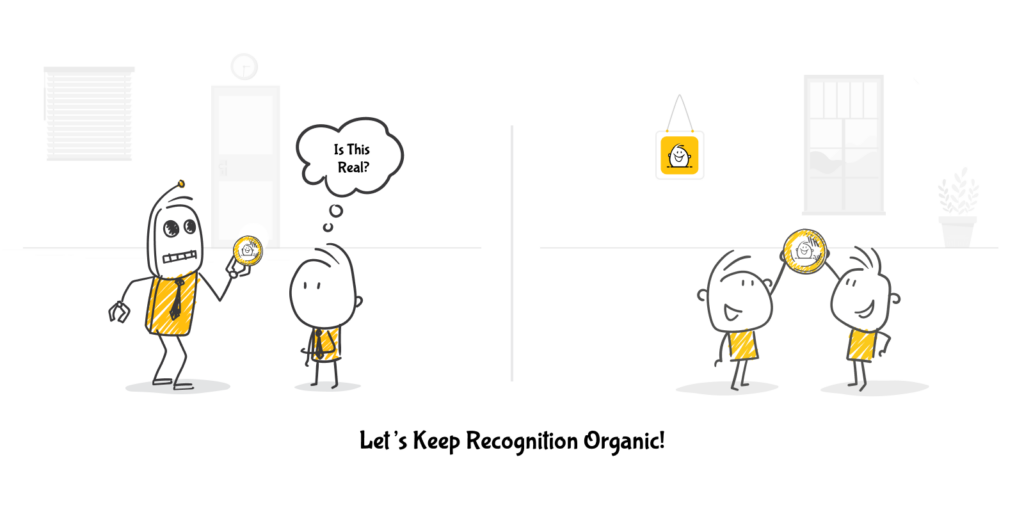
On one hand, AI can inadvertently shift the focus away from human-to-human recognition, as automated systems excel at tracking performance metrics and generating rewards. This can lead to a sense of detachment among employees, with recognition feeling more like a checkbox exercise than a heartfelt acknowledgment of efforts. AI can also be a powerful ally in enhancing peer recognition. It can help identify moments worthy of acknowledgment more efficiently, ensuring that no achievement goes unnoticed. Moreover, AI-driven platforms can facilitate peer recognition by making it more accessible and convenient, creating a seamless process for employees to appreciate each other’s contributions.
Why The Human Touch Matters
In an era dominated by artificial intelligence and automation, the human touch remains an irreplaceable and invaluable element in our work environments. While AI can efficiently process data and perform tasks, it lacks the empathy, emotional intelligence, and nuanced understanding that only humans can provide. In the context of peer recognition, the human touch is what transforms a routine acknowledgment into a heartfelt and meaningful exchange. It’s the difference between a generic “good job” generated by an algorithm and a personalized message from a colleague who genuinely appreciates your efforts.
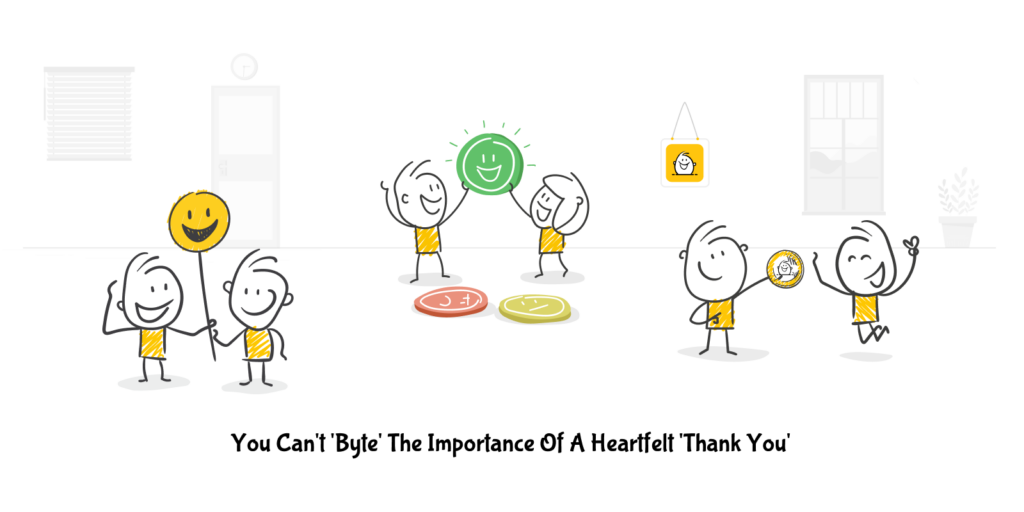
Human-to-human recognition fosters a sense of connection and camaraderie among team members. It strengthens the bonds within the workplace, creating a culture of gratitude that extends beyond formal processes. When colleagues take the time to recognize each other’s contributions, it not only boosts morale but also inspires a greater sense of belonging and loyalty. Moreover, the human touch ensures that recognition is contextual and sensitive to individual preferences. It allows for the celebration of not just achievements but also the unique qualities and strengths that each team member brings to the table.
Strategies for Effective Peer Recognition in the AI Age
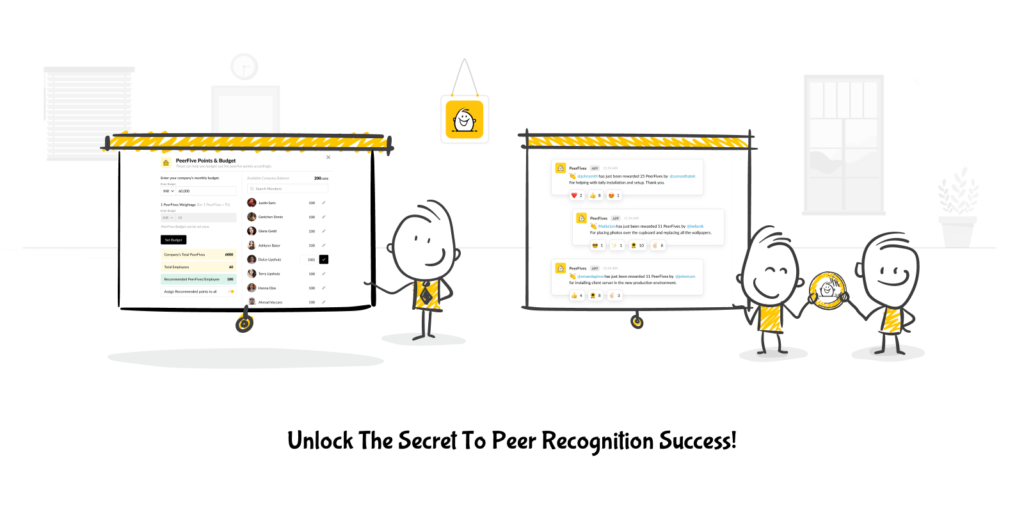
In this digital era, our peer recognition strategies must adapt to the integration of AI, all while preserving the human touch. Here are some key strategies for achieving effective peer recognition in this AI-driven age:
- Personalization with a Dash of AI: Harness AI algorithms to gather insights into the preferences and work styles of your team members. Tailor your recognition messages and rewards to align with individual tastes, ensuring that each acknowledgment feels personal and meaningful. By utilizing AI in this way, you can make your recognition efforts more precise and resonate more deeply with your colleagues.
- Real-time Recognition: Utilize AI-powered tools to provide instant recognition. Whether it’s a quick thumbs-up emoji or a brief shout-out in a team chat, real-time acknowledgment keeps the spirit of appreciation alive and continuous. AI can play a pivotal role in facilitating these immediate interactions, ensuring that recognition is timely and impactful.
- Metrics, Analytics, and Training: Leverage AI-driven analytics to measure the impact of your peer recognition program. Dive into data on recognition frequency, sentiment, and its correlation with employee engagement and retention rates. Use these insights to fine-tune your strategy for maximum effectiveness.
Challenges & Solutions
Integrating AI into peer recognition programs brings forth a multitude of opportunities, but it also presents some unique challenges that organizations must effectively address to maximize the potential of this fusion.
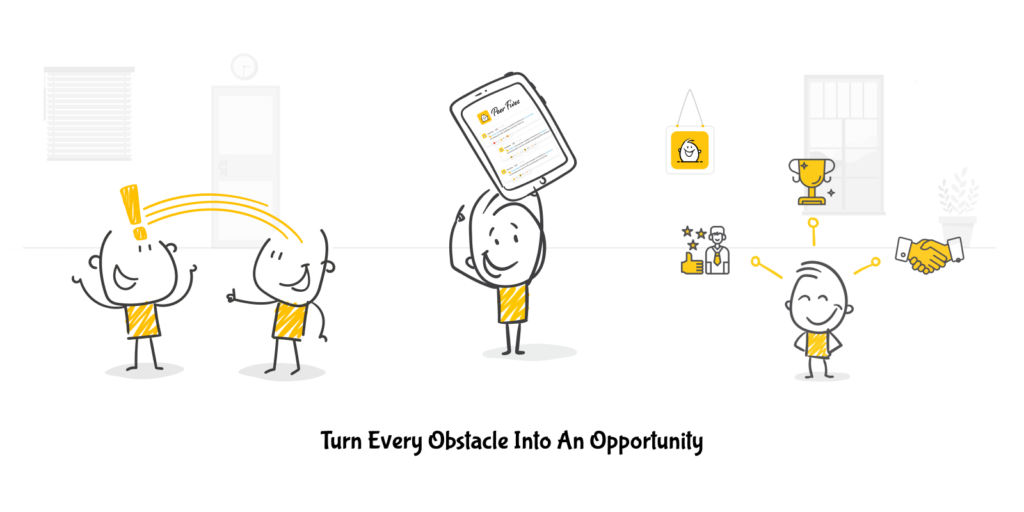
Firstly, maintaining authenticity in automated messages is crucial. The recognition process should feel sincere and personalized, even if it involves AI-driven elements. Balancing the efficiency of automated recognition with the emotional impact of a genuine “thank you” is essential. Secondly, data privacy and security concerns arise. Handling sensitive employee recognition data requires robust security measures to protect personal information, ensuring that employees feel safe participating in these programs. Additionally, avoiding bias in AI-driven recognition is paramount. Algorithms must be carefully designed and regularly audited to prevent favoritism or discrimination. Lastly, striking the right balance between automation and human involvement is essential. While AI can streamline the process, human touch adds emotional depth to peer recognition, enhancing its effectiveness.
Looking Ahead
As we look ahead in the ever-evolving landscape of peer recognition augmented by AI, several exciting possibilities emerge. AI algorithms will become even more sophisticated, enabling organizations to tailor recognition programs to individual preferences. This personalization will lead to more meaningful and impactful interactions, fostering a culture of appreciation and positivity. Additionally, AI can assist in predicting recognition trends and identifying top performers, providing insights to guide HR and management decisions. It will become an invaluable tool for talent development and retention strategies.
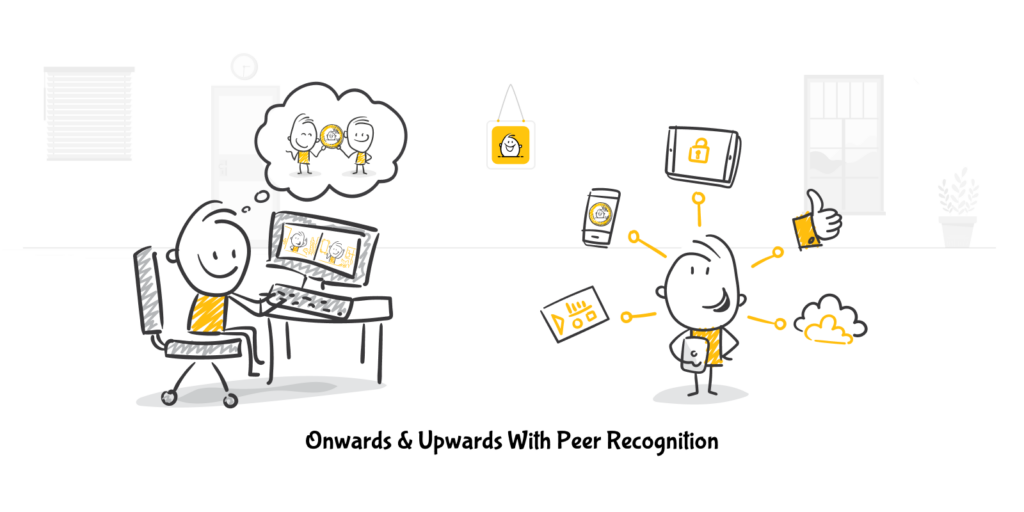
Moreover, AI-driven recognition will extend beyond traditional workplaces. As remote and hybrid work models continue to gain prominence, AI can help bridge the gap by facilitating virtual recognition experiences, ensuring that employees feel appreciated, regardless of their physical location. Furthermore, AI-powered peer recognition can be integrated with learning and development programs, creating a holistic approach to employee growth. It will help in shaping a future where recognition is not just a standalone practice but an integral part of an organization’s talent management strategy.
In Conclusion
The synergy between AI and peer recognition is poised to revolutionize the workplace by making recognition more personalized, data-driven, and accessible. Embracing this future holds the promise of creating more engaged, motivated, and satisfied teams, ultimately leading to enhanced organizational success. Ready to unlock the power of AI-driven peer recognition? Explore how PeerFives can help transform your workplace today!
